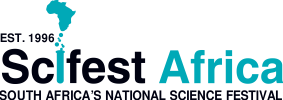South Africa along with many other countries are affected by climate change and other specific local environmental disasters. A need arises to expand our human capacity and wealth to analyze and develop solutions for addressing these challenges in a sustainable way. This presentation will highlight the importance of monitoring the Earth’s land and water from space, air, land, and water in a connected way. Connecting these multiple modes of observation will provide a more holistic view for affected Countries. In addition, this presentation will provide a strong motivation for observation from space and show how communities can become an integral participant through the design, build, and launch of their own satellite and/or the use of data from satellites. South Africa is presently using satellites for observation of the planet along with the Sun’s effect on the country’s infrastructure. Space, through communication satellites, can connect us all, from rural communities to cities, from one continent to another. It will ensure that all communities will grow both socially and economically, and in effect enable the expansion of its human capacity – A Connected World.
Space as an Aid to a Sustainable Planet
- Duration: 60min
- Language: English
- Ages: All Ages
- Date: October 29, 2020 20:00
- Recorded: Live session with recording available afterwards
CREDITS
Prof William Edmonson
ABOUT THE ARTISTS
William W. Edmonson (Professor) received his Ph.D. in Electrical and Computer Engineering from NC State University in 1990. From 2010-19, he was the National Institute of Aerospace (NIA) S.P. Langley Professor with the Department of Electrical and Computer Engineering, NC A&T State University (NCAT). Presently, he is Director of the Small Satellite Systems Research Center at NCAT, whose research focuses on advancing the capabilities, functionality, and scope of mission for small satellites, particularly in the areas of inter-satellite communication and verifiable model-based systems engineering. Research thrusts at the Center are two-fold: to develop satellite systems and subsystems, and to develop a systems engineering methodology, processes and tools that is optimized for flexible and reconfigurable space systems with the goal of providing a reduced design, build, and launch life cycle for reliable small satellites. From 2008-09, he was on an IPA assignment with NASA-Langley as lead systems engineers for GPS radio occultation instrument. Presently, he is collaborating with universities in Ethiopia, Portugal, South Africa, Spain, and Nigeria on human capacity development along with research on small satellites and autonomous vehicle development. Interesting Fact: Is a collector of African science fiction.

